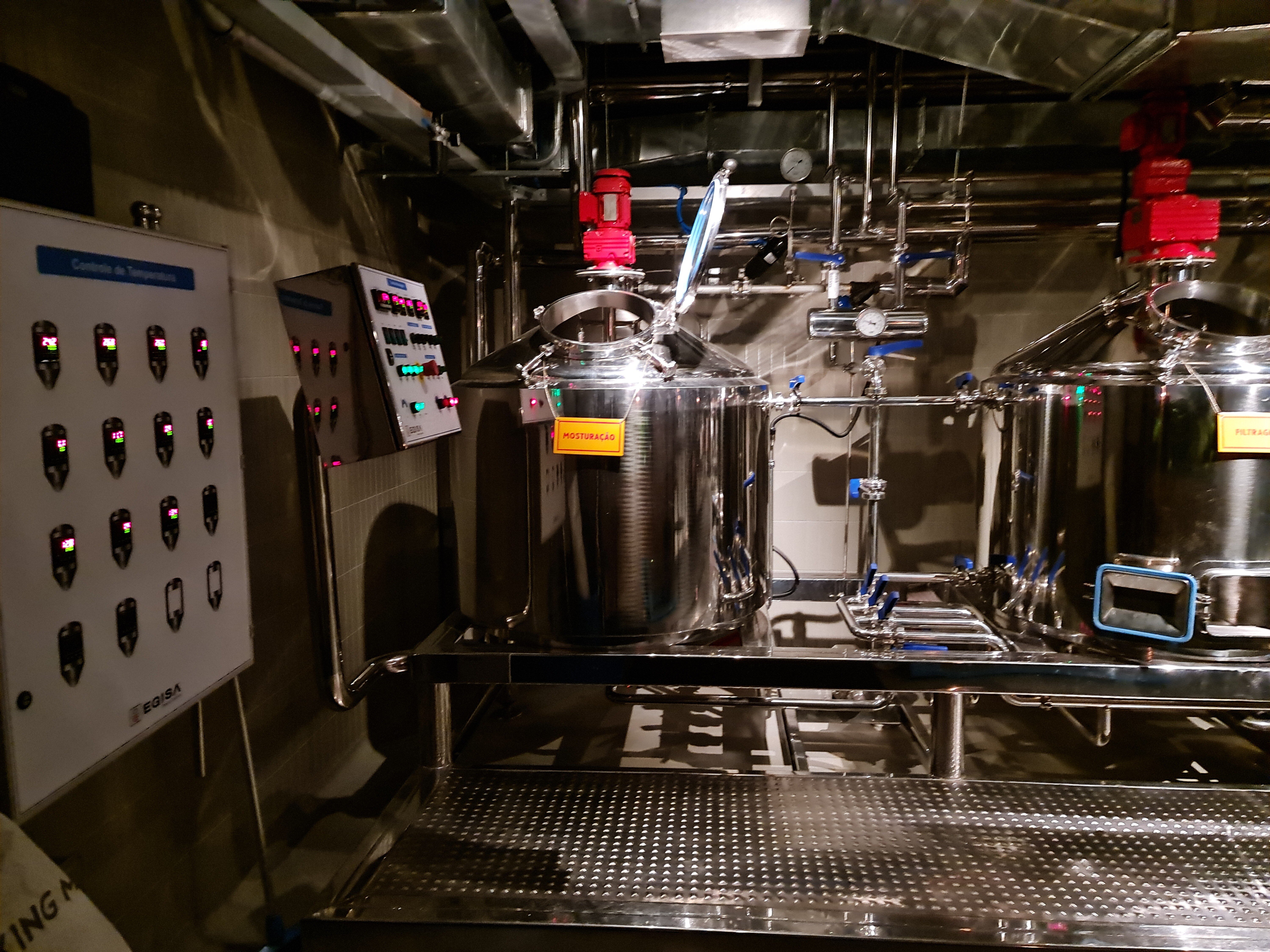Energy costs are rising, carbon targets are tightening, and businesses are under pressure to act.
For manufacturers and large energy users, Scope 2 emissions—those tied to purchased electricity, steam, heating, and cooling—make up a significant portion of their carbon footprint. The good news? Companies are adopting innovative decarbonization strategies, leveraging renewable energy, electrification, and advanced efficiency technologies to reduce emissions while maintaining performance and cutting costs.
And the competition is heating up. The corporate world’s newest extreme sport: the race to zero emissions, is pushing businesses to rethink their approach to energy, with every kilowatt-hour now a critical factor. From AI-driven industrial energy management to industrial heat pumps and power purchase agreements, manufacturers are unleashing an arsenal of solutions that would make Tony Stark jealous. And here’s the kicker – these Scope 2 decarbonization strategies aren’t just good for the planet; they’re proving to be serious money-makers too.
Scope 2 Emissions and Their Importance
Want to know what’s keeping sustainability managers up at night? It’s those Scope 2 emissions - the greenhouse gases that come from buying electricity, steam, heating, and cooling for operations. They’re different from Scope 1 (direct emissions from owned sources) and Scope 3 (other indirect emissions throughout the value chain).
For energy-hungry industries, Scope 2 emissions make up a huge chunk of their carbon footprint. Think about it: every kilowatt-hour of electricity used in manufacturing, every bit of steam needed for processing - it all adds up. That’s why tracking and cutting these emissions is so important for meeting those Paris Agreement targets.
The cool thing about Scope 2? Companies can actually see how their energy buying decisions stack up. When businesses switch to cleaner power sources or get smarter about energy use, they're not just helping the planet - they’re often saving money too.
Overview of Scope 2 Decarbonization Strategies
So, how are companies tackling their Scope 2 emissions? Energy efficiency is the first go-to move (because who doesn’t like using less power?). Then there’s the shift to renewable energy sources like solar and wind, plus smart electrification of industrial processes.
Industrial heat pumps are making waves in the manufacturing world too. They’re super efficient at converting electricity into useful heat - perfect for manufacturing processes that used to rely on fossil fuels.
The key? Don’t put all your eggs in one basket. Companies are finding that combining these decarbonization strategies - maybe running production lines on solar power while using heat pumps for process heating - works better than focusing on just one approach. Plus, setting clear targets helps keep everything on track.
Improving Energy Efficiency
Ready to dramatically reduce those Scope 2 emissions? Start by giving your equipment lineup a makeover. Swapping out old lighting systems for commercial LED lighting and upgrading to high-efficiency motors can make a big difference in your electricity bill.
But the real magic happens when you fine-tune your industrial processes. Think smart temperature controls, waste heat recovery systems, and properly sized equipment that matches your actual needs. For example, optimizing compressed air systems (fixing those pesky leaks!) can reduce energy waste by up to 30%. This can all be accelerated with smart energy efficiency software.
Want proof it works? At CoolPlanet, we helped one UK-based brewery to cut their energy use by 30% through smart tech and sustainability. We installed variable speed drives on their pumps, added insulation to their steam pipes, and optimized their refrigeration system. The result? Lower emissions and serious cost savings. Pretty sweet deal, right?
Transitioning to Renewable Energy Sources
Looking to take your Scope 2 emissions down a notch? Solar PV systems have become a popular choice for industrial facilities, thanks to their ability to transform unused rooftops and land into on-site sources of clean electricity. A recent example is CoolPlanet’s work with Hibernia Steel, where we engineered and installed a rooftop solar array without interrupting day-to-day operations. From design and planning to procurement and a quick ten-day on-site build, the entire project took just six months—no shutdown required. Almost three hundred 270-watt panels and a 10-kilowatt inverter with shadefix technology now provide 40% energy self-sufficiency, cutting 1,000 tonnes of CO ₂over the array’s lifetime.
Wind power's making big moves too, especially for operations that need lots of juice. Companies are either putting up their own turbines or buying wind energy through power agreements. The best part? Wind energy prices keep dropping year after year.
And don't forget about biomass! It's perfect for companies needing process heat - think wood chips or agricultural waste feeding industrial boilers. Since these materials would have released CO2 anyway when decomposing, it's basically carbon-neutral when used for energy. Plus, biomass can provide steady power even when the sun's not shining or the wind's not blowing.
Smart Technologies for Emissions Reduction
Ever wonder how manufacturing companies keep tabs on all that electricity usage? Smart monitoring systems are changing the game. These tech tools track energy consumption and emissions in real-time, helping businesses spot waste and reduce your carbon footprint fast.
Modern energy and carbon management systems like CoolPlanetOS work like a fitness tracker for your facility - they measure, analyze, and help optimize power use across operations. They can automatically adjust heating and cooling, switch off idle equipment, and even predict when maintenance is needed before problems pop up.
But CoolPlanet goes a step further than real-time monitoring. With its Net Zero Glidepath, companies can visually map out the impact of different decarbonization actions on their carbon and energy reduction targets. This tool doesn’t just track where you are today—it helps you model the best path forward.
For example, if you're weighing the benefits of a heat pump, a biomass boiler, or a solar array, Net Zero Glidepath allows you to compare their potential carbon reduction impact and cost-effectiveness. It provides a clear view of your current net-zero trajectory, baseline, and annual targets, helping you prioritize the actions that will drive the greatest results.
With real-time insights and strategic planning combined, businesses can move beyond tracking energy use to making data-driven, high-impact decisions that accelerate their journey to net zero.
Load Shifting and Demand Response Strategies
Ever heard of time-of-use pricing? It's like happy hour for electricity - use power when demand is low, and you'll pay less. Smart companies are shifting their heavy-duty operations to off-peak hours, when power's cheaper and often cleaner.
Peak load reduction isn't just about timing, though. Companies are getting creative with their energy use, running equipment in stages instead of all at once. Some are even using thermal storage (think giant ice tanks) to cool buildings with electricity from nighttime hours.
Demand response programs take it up a notch. When the grid’s stressed, businesses can dial back their power use in exchange for payments or credits. It's a win-win - the grid stays stable, and companies make money while reducing carbon footprint.
Continuous Monitoring and Reporting of Emissions
You can't manage what you don't measure! That's why smart businesses track their Scope 2 emissions around the clock. Real-time monitoring helps spot energy waste fast and shows exactly where improvements can happen.
The GHG Protocol gives companies clear rules for measuring and reporting these emissions. It's like having a recipe book - follow the steps, and you'll get consistent, reliable data every time. Modern software like CoolPlanetOS makes this easier than ever, with automated data collection and analysis tools that turn complex energy data into clear insights.
But it’s not just about following rules. When companies share their emissions data openly, it builds trust with customers, investors, and communities. Plus, good reporting helps businesses spot trends in their energy use, find cost-saving opportunities, and stay ahead of new regulations. Think of it as keeping score - the more you know about your emissions, the better equipped you are to bring them down.
Utilizing Power Purchase Agreements (PPAs) for Clean Energy
Power Purchase Agreements are becoming a favorite tool for companies looking to lock in clean electricity supply. These contracts let businesses buy renewable power directly from generators - often at prices lower than grid electricity.
PPAs come in two flavors: physical and virtual. With physical PPAs, companies get actual electrons from specific wind farms or solar plants. Virtual PPAs work more like financial contracts, where companies support renewable energy projects while still using their local grid.
Big tech companies are jumping on board - Apple, Google, and Microsoft use PPAs to power their data centers with 100% renewable energy. But it's not just tech giants - manufacturers and retailers are signing these deals too.
What's cool about PPAs? They protect against rising energy costs (since prices are locked in), help meet decarbonization goals, and give companies bragging rights about supporting new clean energy projects. Plus, many PPAs now include storage options, so companies get reliable power even when the sun isn't shining.
Employee Engagement in Decarbonization Efforts
Want to know the secret sauce for successful carbon reduction? It's your people! Companies find that getting employees engaged about helping decarbonization efforts makes a huge difference in meeting those Scope 2 targets.
Smart businesses are making it fun and rewarding. They're running competitions between departments to cut energy use, offering prizes for the best green ideas, and setting up "eco-champion" programs where staff lead local initiatives. Some companies even tie bonuses to meeting sustainability goals!
Here's a cool example: A real estate group got their building maintenance teams fired up about energy savings. The teams started tracking electricity use, fixing equipment settings, and suggesting better ways to run heating and cooling systems. Within a year, they slashed emissions by 40% - all because employees felt ownership of the project.
Training plays a key role too. When staff understand how their daily choices affect energy use, they're more likely to switch off unused equipment, report energy waste, and come up with smart solutions for cutting power consumption. That’s where CoolPlanet’s employee sustainability training comes in. Whether it’s Hibernia Real Estate Group, Tikehau Capital, or Transdev, our clients see the value of an education program that connects every individual—from the plant room to the boardroom—with the bigger mission.
CoolPlanet’s climate education program ensures organizational alignment by showing employees how their daily actions—like switching off equipment or spotting energy leaks—contribute to the bigger decarbonization picture. Participants become more proactive in reporting energy waste and more innovative in proposing solutions to cut power consumption.
When everyone understands the “why” behind net zero goals, they’re far more likely to get behind them—and that collective effort is exactly what turns data-driven insights into real, lasting carbon reductions.
Future Trends
Looking ahead, high-temperature heat pumps are making waves in industrial settings. These powerhouses can hit temperatures up to 165°C (329°F), perfect for manufacturing processes that used to rely on fossil fuels. They're getting more efficient too - newer models can turn one unit of electricity into four units of heat!
Green hydrogen for decarbonization is stepping into the spotlight for hard-to-fix sectors. It's made using renewable electricity to split water molecules, creating a clean fuel that works great in heavy industry. Some steel mills are already testing hydrogen to replace coal in their furnaces.
Direct air capture tech is getting better and cheaper. Think giant fans that pull CO2 right out of the air! Plus, AI and machine learning are making energy systems smarter than ever. Smart algorithms can predict energy demand, optimize production schedules, and find power-saving opportunities we humans might miss.
The best part? As these technologies mature, prices keep dropping. What seemed like sci-fi a few years ago is becoming everyday reality in factories worldwide.
Challenges and Opportunities in Implementing Decarbonization Strategies
Let's be real - cutting Scope 2 emissions isn't always a walk in the park. The upfront costs can make CFOs sweat, especially when it comes to replacing old equipment or installing renewable energy systems. Technical limits can throw a wrench in the works too - some industrial processes just aren't ready for full electrification yet.
But here's the good news: these challenges come with silver linings. Companies that tackle scope 2 emissions head-on often find themselves saving big on energy bills. Plus, they're building stronger businesses that can handle whatever energy markets throw their way.
Innovation is popping up everywhere. Companies are testing new tech combos, like pairing solar panels with battery storage or using AI to fine-tune their energy use. Some are even working together across supply chains, sharing costs and knowledge to speed up progress.
The trick? Start small, test what works, and scale up the winners. It's not about doing everything at once - it's about making smart moves that add up over time.
Role of Government Policies and Regulations
Carbon pricing is shaking things up in the business world! Whether it’s carbon taxes or cap-and-trade systems, these tools make companies think twice about their energy choices. When businesses have to pay for their emissions, achieving decarbonization goals starts looking pretty attractive.
But it’s not just about sticks - there are carrots too. Many governments offer tax breaks for energy-efficient equipment or subsidies for renewable power projects. Some places require utilities to supply a certain percentage of clean electricity, which helps create stable markets for wind and solar power.
The playing field isn't level everywhere, though. While the EU pushes strong carbon prices, other regions lag behind. This creates headaches for companies operating across borders. Smart businesses aren’t waiting around - they’re planning ahead by building internal carbon prices into their decisions, and implementing decarbonization strategies, figuring it’s better to be ready when (not if) stricter rules come along.
Financial Implications and ROI of Decarbonization Strategies
Money talks - and when it comes to Scope 2 emission reductions, the numbers tell a pretty good story. Energy efficiency projects often pay for themselves in 2-3 years through lower utility bills. LED lighting upgrades, for instance, can cut electricity costs by 75% while lasting five times longer than traditional bulbs.
Renewable energy clean facts show solar panel prices have dropped 80% since 2010, making clean power cheaper than grid electricity in many places. Companies using PPAs are locking in stable electricity rates below market prices for 15-20 years.
The math works out well for heat pumps too. While they cost more upfront than traditional heating systems, they can reduce operating costs by 40-60%. CoolPlanet helped one food processing client save $150,000 annually by switching to industrial heat pumps.
Smart companies are also factoring in future carbon prices and regulations. By investing in clean energy now, they're protecting themselves against rising costs later. Plus, they're finding that customers and investors really like seeing those emission numbers go down.
Integration with Broader Sustainability Goals
Cutting Scope 2 emissions is just one piece of the sustainability puzzle. Smart companies link their carbon reduction work with other green initiatives - like water conservation, waste reduction, and responsible sourcing. It's like making a recipe - all the ingredients need to work together!
The UN Sustainable Development Goals give businesses a handy framework for connecting these dots. When companies work towards decarbonization goals and examples, they're not just cutting emissions - they're often reducing water use and creating local jobs too. And those energy efficiency projects? They typically lead to less waste and better resource management across the board.
Science-based targets help companies stay on track. These targets look at the big picture, making sure emission cuts line up with what science says we need to limit global warming. Tools like the GRI Standards help companies track and report their progress, showing how energy choices affect everything from air quality to community well-being.
The Path Forward: Making Decarbonization Strategies Work
The journey to reducing Scope 2 emissions isn’t just a corporate checkbox – it’s becoming the cornerstone of smart business strategy. As technologies evolve and costs continue to drop, companies are discovering that decarbonization isn't just possible; it’s profitable. From energy-efficient equipment to renewable power purchase agreements, the toolkit for emission reduction keeps growing.
The future belongs to manufacturing businesses that embrace these changes today. Those who combine innovative technologies, employee engagement, and strategic planning are not just reducing their carbon footprint – they’re building resilient, future-proof operations that can thrive in a low-carbon economy. The question isn’t whether to decarbonize anymore; it’s how fast can we get there?





